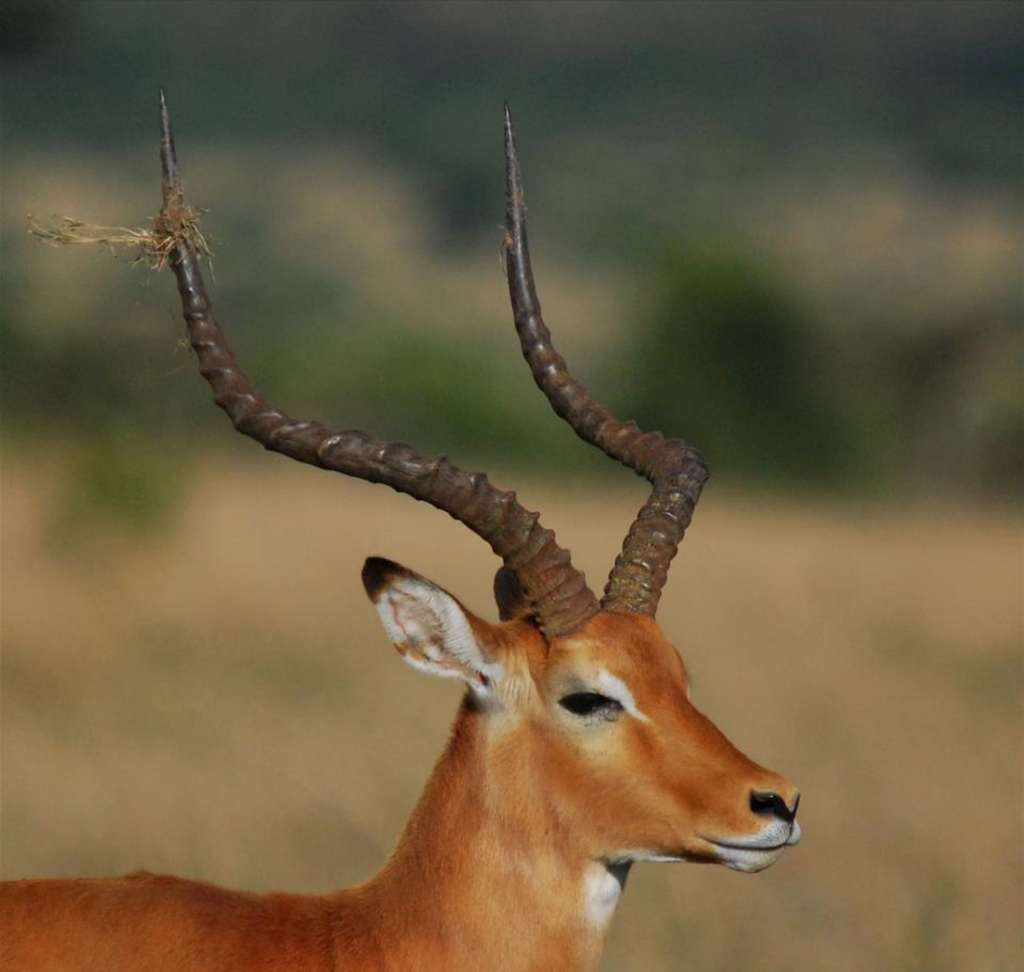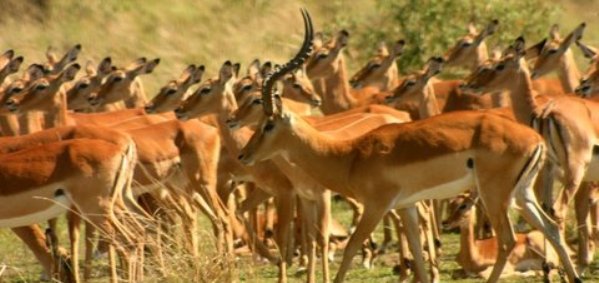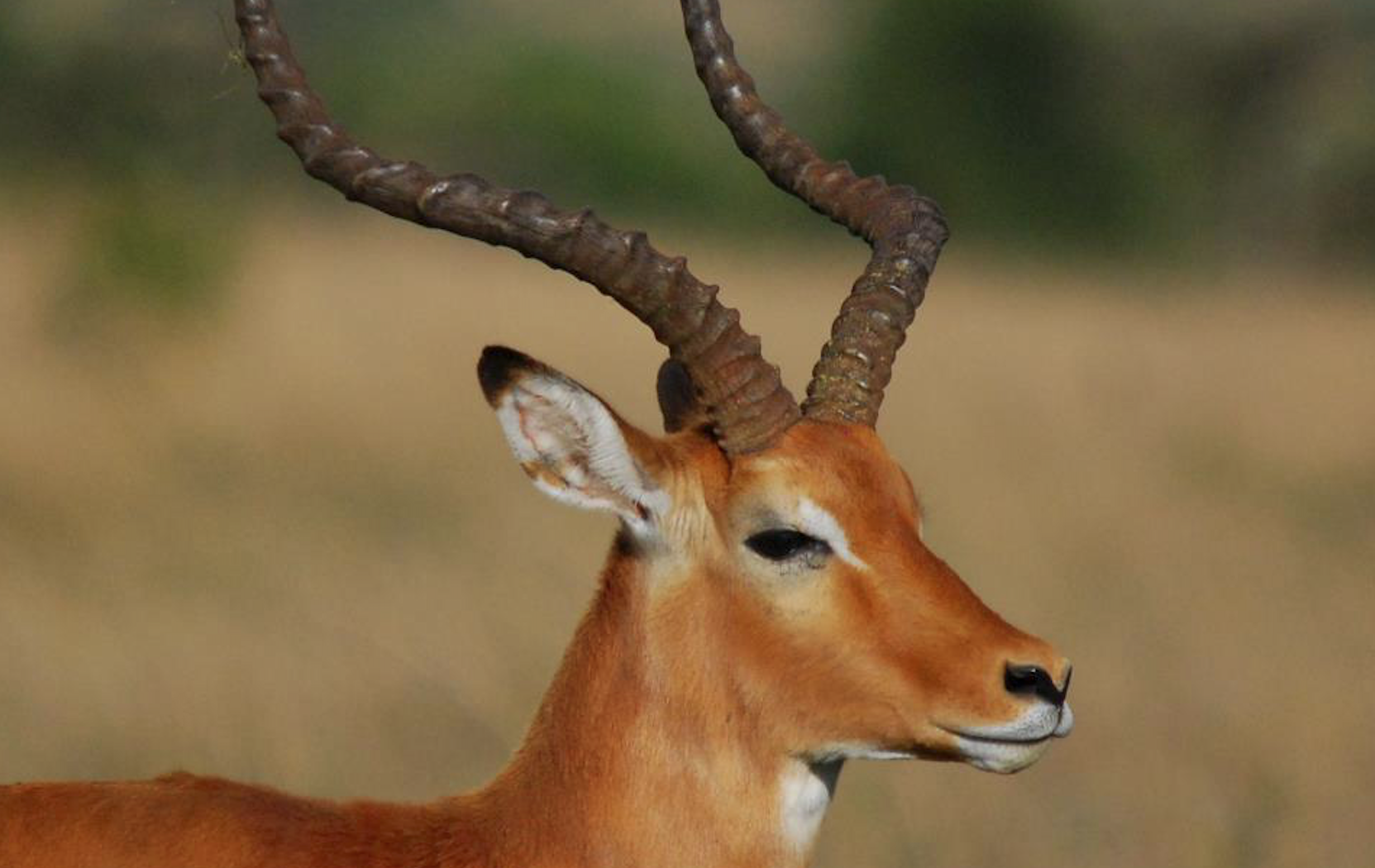
Impalas are a type of antelope native to several countries in tropical Africa. At the Ol Pejeta conservancy, we have the common Impala. These are wild bovines that live on the savannah open grassland easily distinguishable from other species of antelope by their shiny reddish brown color. They are diurnal which means they are most active during the day. They are not specific feeders but they prefer to live near a water source, during the wet season so they can graze on the lush green grass. During the dry season, they browse on short shrubs and trees.

One of the most remarkable traits among the impala is that their society is exceptionally polygamous. They live in different groups of males and females. The male group is referred to as the bachelor herd consisting of sub adult males and adult males, the female herds, also referred as Harem or breeding herds, are usually large with 40 and or more females accompanied by one dominant male.
At the Ol Pejeta Conservancy, the most common number of females per herd observed is 41. The dominant male has the advantage, or duty, to mate with all the females in the herd when their biological clocks demand it. This is usually during a specific mating season. He protects the females from other males and prevents them from moving to other herds. This is a role that requires them to be capable of holding their own against any ambitious male rival. They usually stage a fights with the competition which often ends up in broken horns and occasionally death.
Visitors at the conservancy will sometimes see an impala with single or broken horn as testament to likely unsuccessful attempts at conquest. However, just like in the human societies, even the most dominant males will sometimes have outside genes introduced into their herd by “sneaker males”. These are males that opt to mate with members of a rival’s harem on the sly and sprint away at the slightest hint or discovery, rather than risk life and horn to overthrow a dominant male.
Impalas have a gestation period of six to seven months and usually hide their fawns in thick bush to keep them away from predators before they later join other females. The young stay in a juvenile group with the females.
Once they are sub-adults, the males join the bachelor herds after one year and start mating at the age of five; females can reproduce from age two.
Impalas live up to 15 years in the wilderness and have overlapping home ranges. They fall prey to a variety of carnivores, which include leopard, cheetahs, lions and hyenas and are in constant danger. They are highly alert and keeping a lookout for predators is usually the job of adult females. Unlike other antelopes, once a threat is spotted, impalas like to hide in thick bush standing motionless. They only flee at the last minute, leaping up to three meters high.
By Mercy Waithira




Thanks for this interesting article. The impala is such a graceful looking animal when it leaps in the air. Obviously leaping long and high allows this animal to get away from predators quickly. The evolution of a species is always fascinating…survival of the fittest!